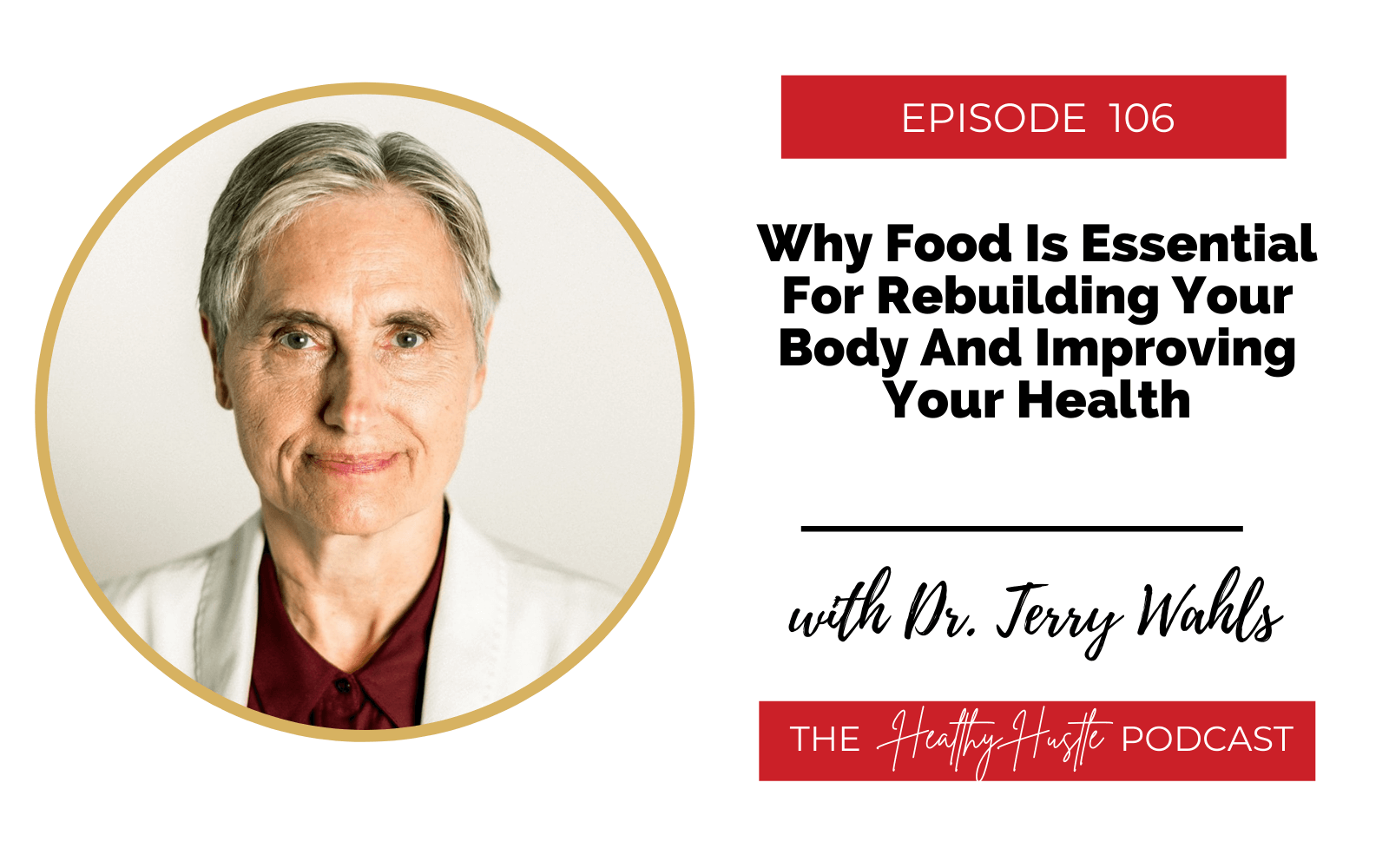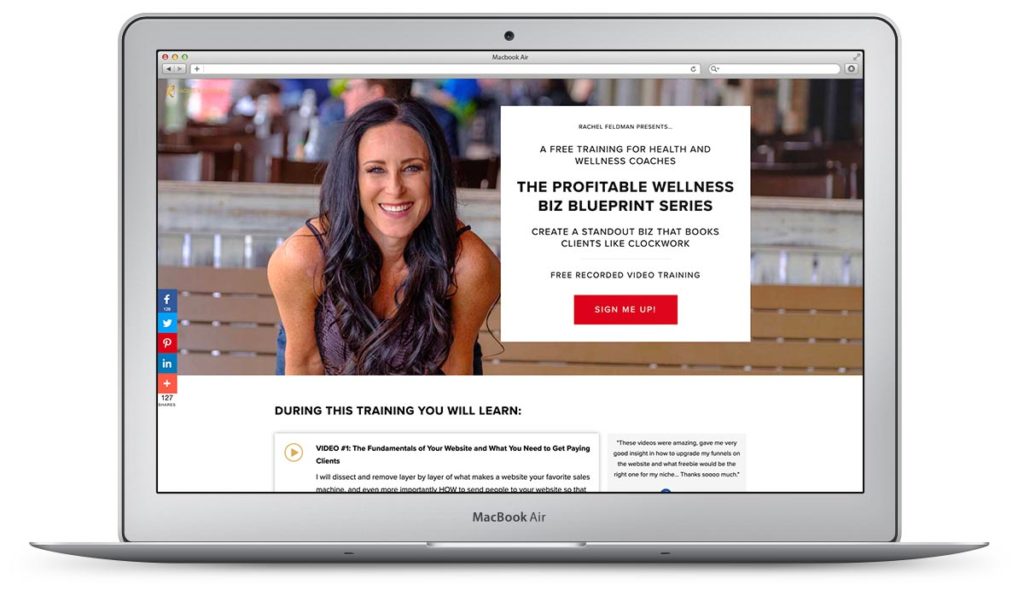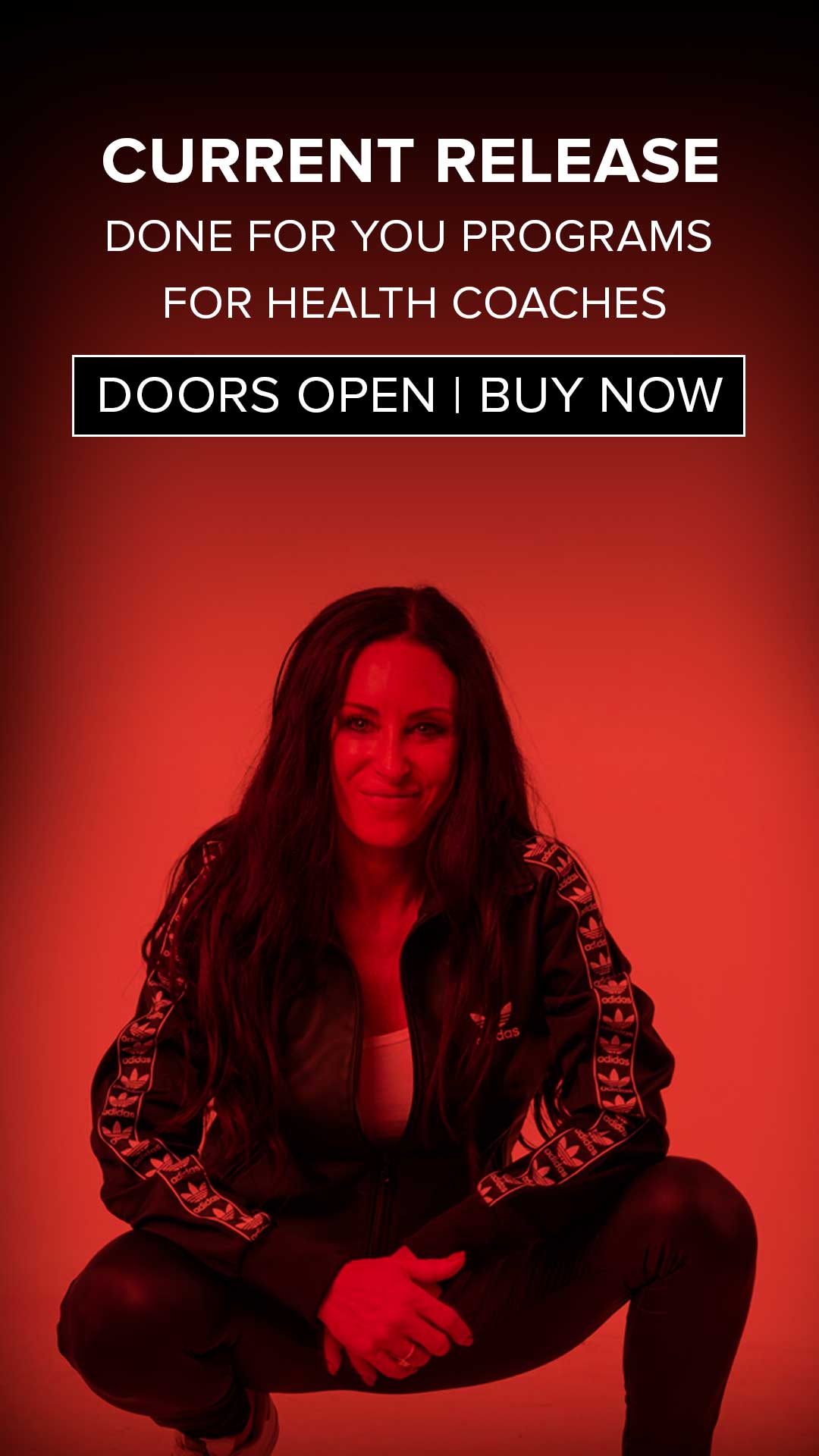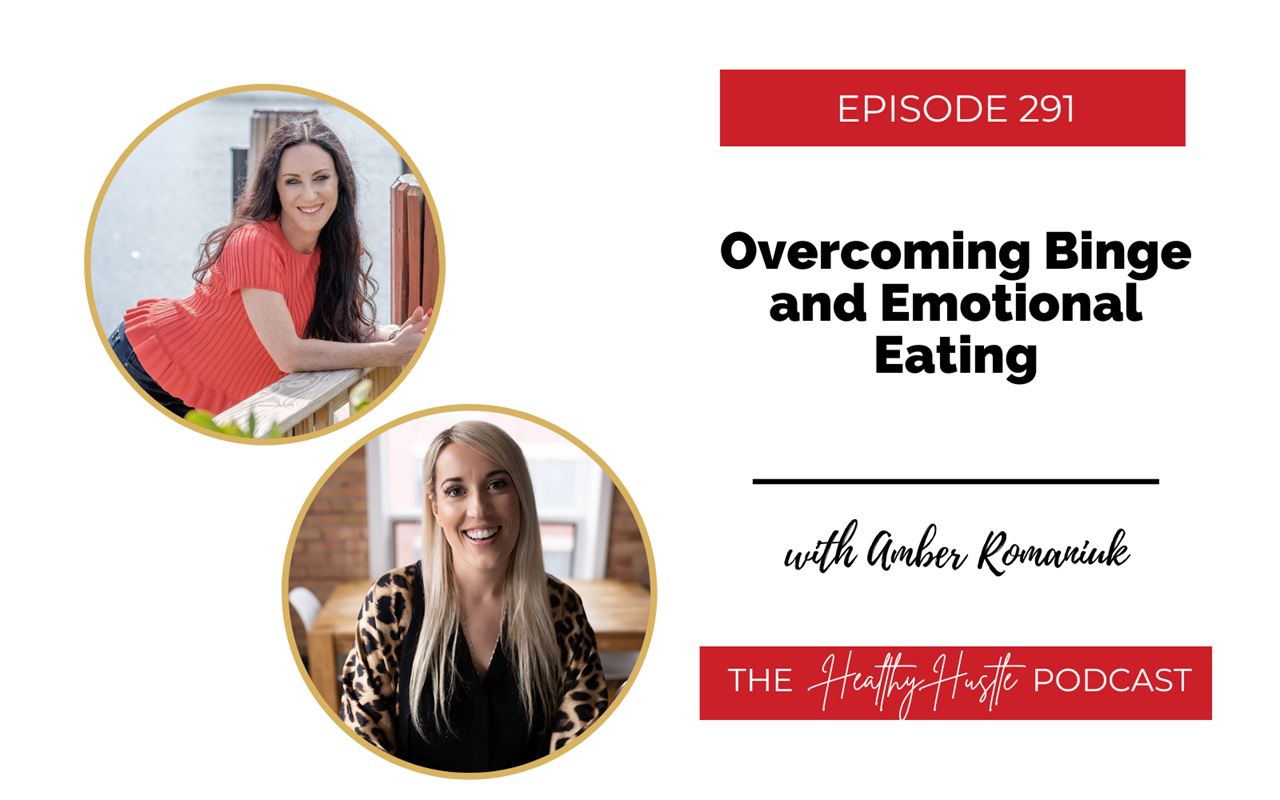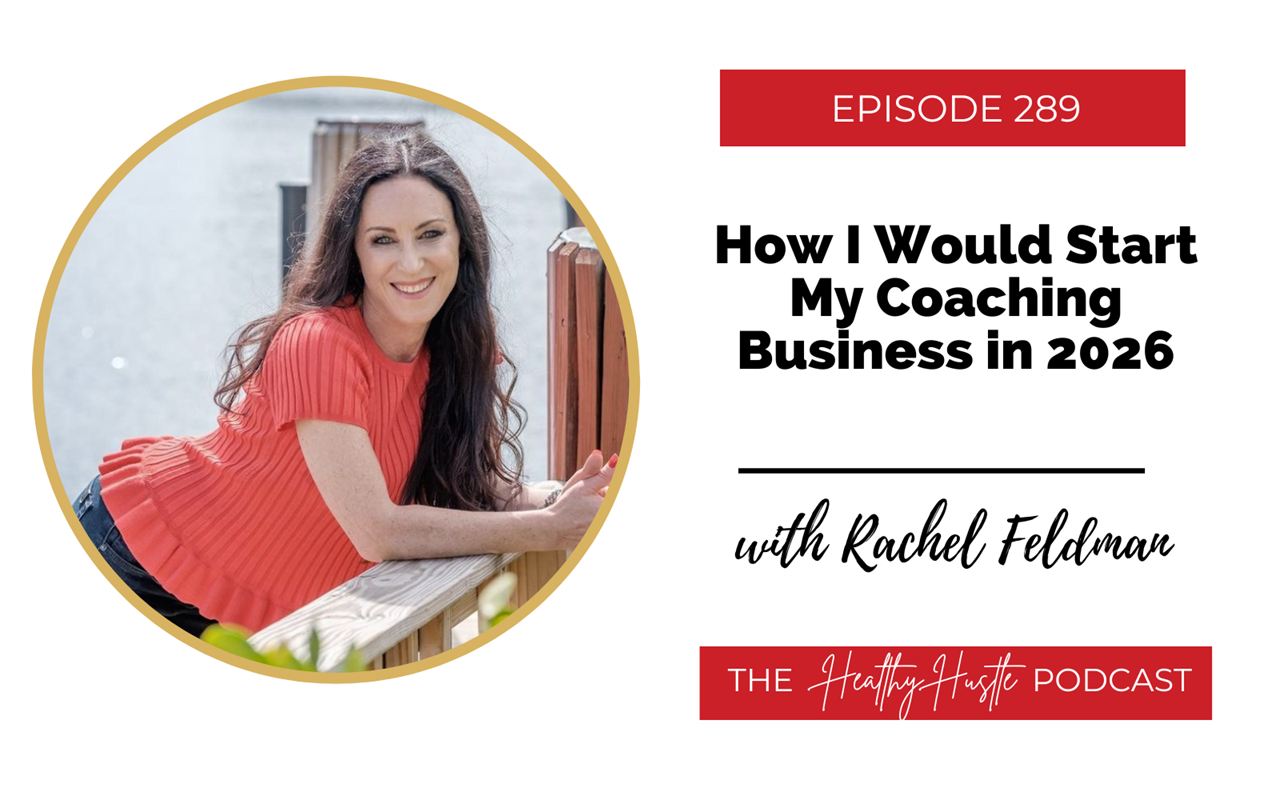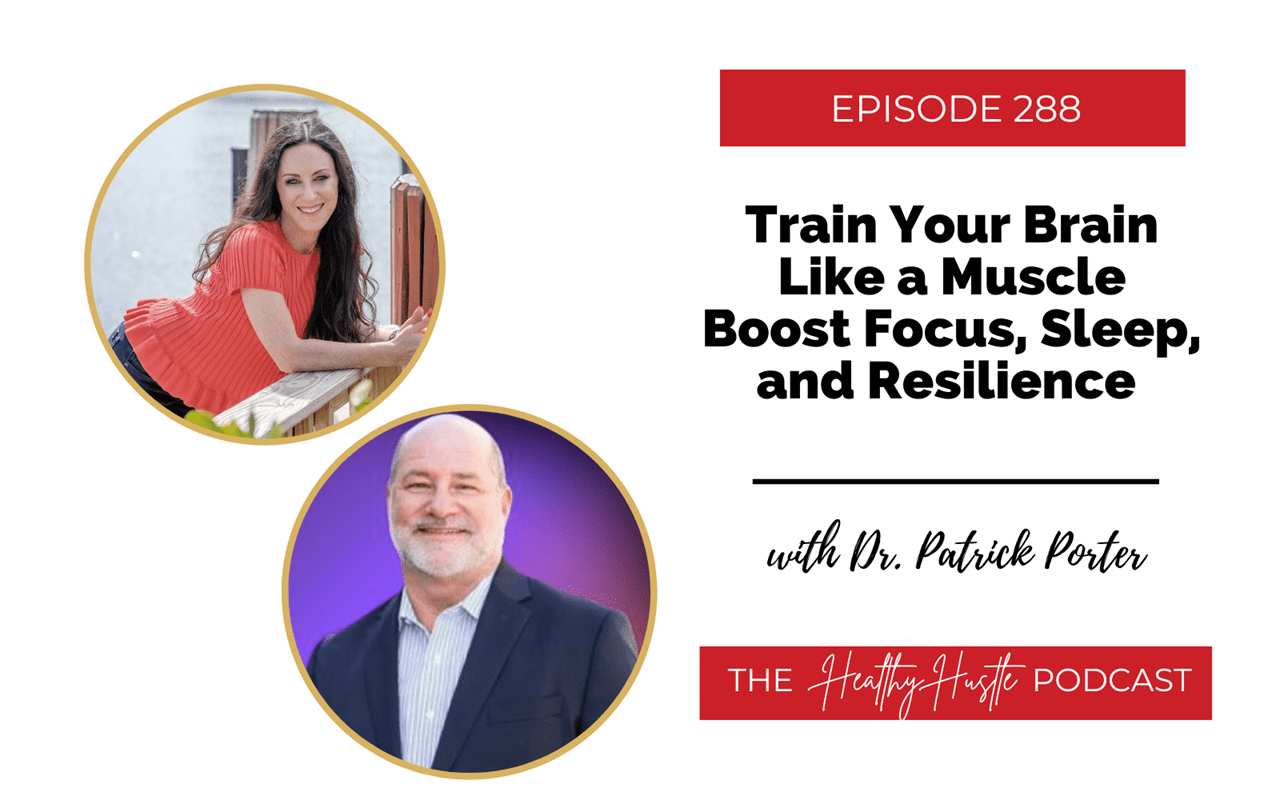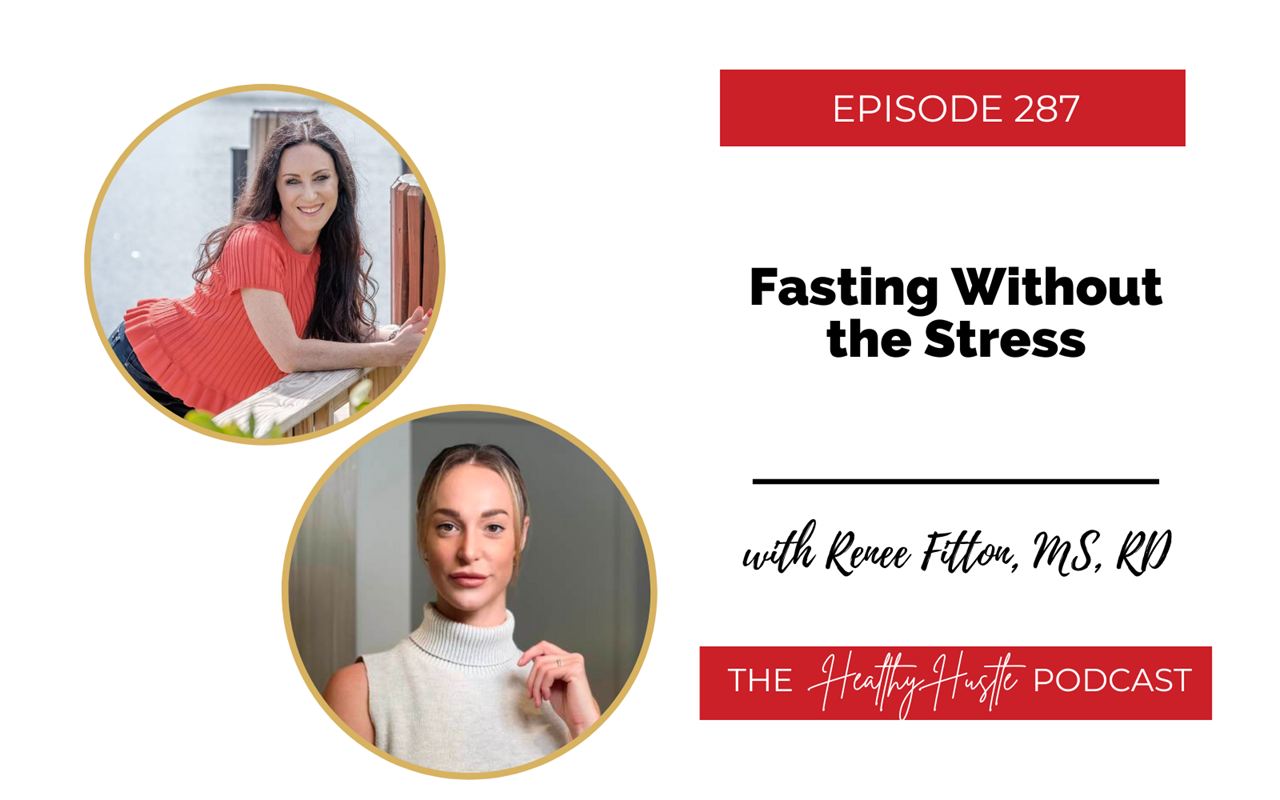If you or the clients you work with suffer from health issues, especially autoimmune-related ones, you might have realized that conventional medicine isn’t always the answer. While supplements can be a great next step, truthfully, you want to look at food as a pure energy source for rebuilding your body using minerals, vitamins, and nutrients that we, as a modern society, tend to have an imbalance or lack of.
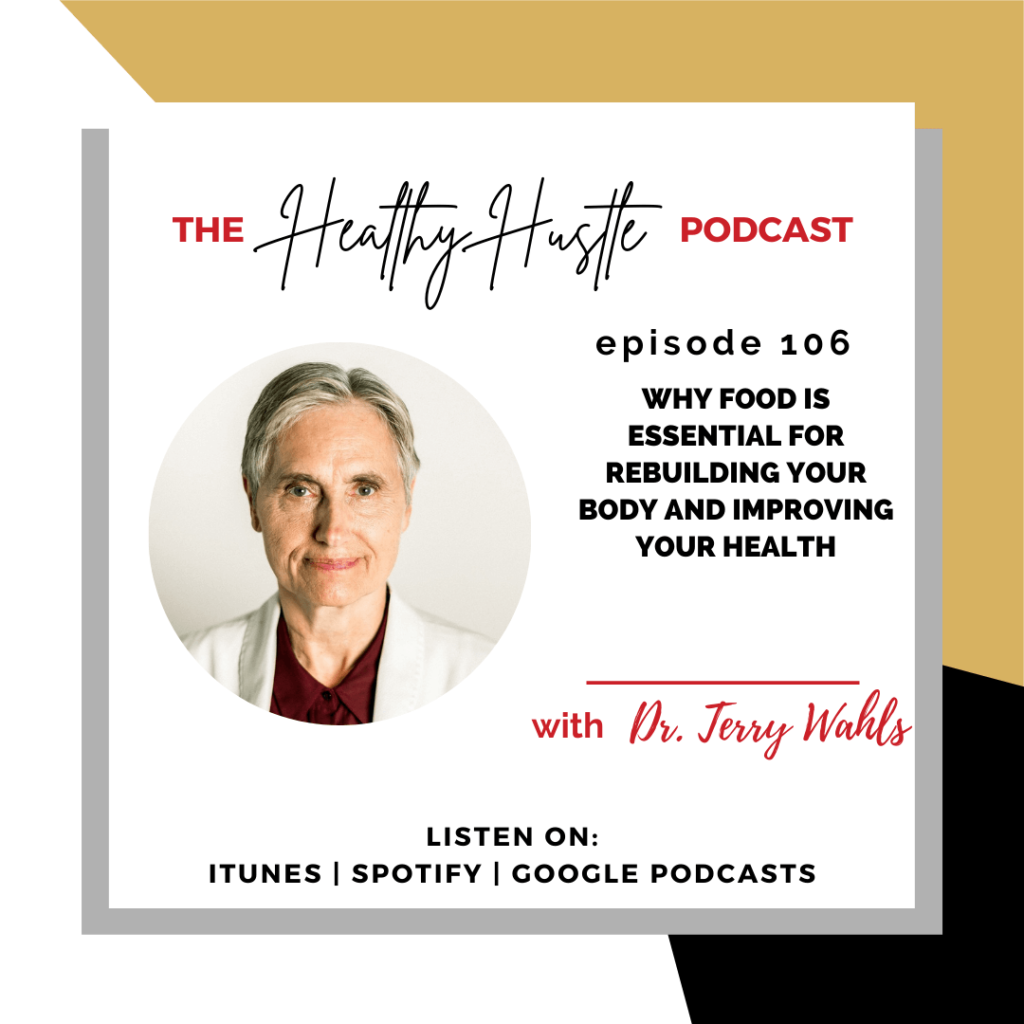
In today’s episode, I’m talking to Dr. Terry Wahls, MD, Academic Internal Medicine Physician, Clinical Professor of Medicine at the University of Iowa Carver College of Medicine, author and creator of The Wahls Protocol, and a patient with secondary progressive multiple sclerosis.
During our conversation, Dr. Terry talked about her MS diagnosis and how that stimulated the development of The Wahls Protocol, the importance of the mitochondria, the benefits of the ketogenic diet, and why eating the right food is essential for balancing the body and maintaining (or getting back) our health and vitality. She’s also giving some key takeaways for health coaches working with clients who want to take back control of their health issues.
Mentioned In The Episode:
Clinical Trial
Narkom
🔥Gut Health Specialists: Ready To Rock Your Reputation Online?
🔥 Help your clients rebuild their gut bundle for health coaches
🚀 When should you start list building for your next launch?
🚀 YESTERDAY. Don’t stress! You don’t need to spend two weeks getting everything ready to start list building. I’ve done all the work for you! If you need support creating opt-in offers that build trust and help you attract hot leads, then you’ve got to download this done-for-you Rebuild A Healthy Gut bundle right now.
Even if all I gave you was:
✨A 3 Day Gut Rebuilding Plan that you can use right away with your clients! (Vegans I wouldn’t forget about you, there’s a plan for you too!)
✨10 Gorgeous Social Media Images to launch right away
✨5 STUNNING Canva Covers so you don’t need to waste any time updating them
✨1 Blog Post that you can use to generate traffic, turn into a freebie, or keep as a series of nurturing emails to your list! That’s a pretty sweet deal right? BUT… You also get TWO HOURS of bonus video training to walk you through the essential process of building your list the right way.
In Video #1 of this 3-part series, you’ll learn how to:
👉 Create opt-in freebies that your ideal client will go crazy over
👉 Know exactly what topics to create freebies around so you attract leads ready to buy
👉 And test your freebies so you can build your list faster This is the list-building vegan, chocolate, protein boost you need to grow your list and take your business to the next level! It’s time to list-build a BOSS! Who’s with me? Download the free goodies right here 👇👇👇
Rachel: Hey guys, this is Rachel Feldman, I am so completely excited to be here tonight with Dr. Terry Wahls. She is somebody who I have just completely respected and followed for so many years. She also has written phenomenal books. One is The Wahls Protocol, and I really encourage you to actually go and buy it because it is not only an amazing book, but also one that I believe for people who have autoimmune, similar to myself, but for people who are just really trying to understand preventing some of these chronic illnesses that we’re seeing in today’s world. Definitely go and get it.
I just want to welcome you Terry and say thank you so much for being here. As I’ve mentioned before we started recording I found you probably eight years ago, when my family and I were going through a lot of health issues. Your work at that time, I feel like it was work that nobody was doing and yet it seemed so simple in the approach with macronutrients, micronutrients and yet it was so profound. So I want to just thank you for bringing this work and welcome you tonight to this interview.
Dr. Terry: Well I’m very glad to be here and you clearly saw me in the beginning so I’m glad we could be on this journey together.
Rachel: Well, I have to say that part of you discovering this was not something I’m sure enjoyable for you because some people don’t know your story. You were diagnosed in 2000 with MS. So can you actually tell me about The Wahls Protocol and how you actually came to find this way of eating and why this was beneficial.
How The Development Of The Wahls Protocol Came About
Dr. Terry: So, I’m an academic internal medicine physician, and was very much a believer of the latest drugs, the newest technology, the newest science, and in 2000, I was diagnosed with relapsing-remitting multiple sclerosis. I knew that within 10 years of diagnosis 1/3 of those newly diagnosed with MS will have difficulty and walk with a cane, walker, or wheelchair. And one-half will be unable to work due to severe fatigue.
I went and sought out the best clinical research center that was in the Midwest, which was the Cleveland Clinic. I saw their best people and I took the newest drugs. And still, within three years my disease had progressed and had moved into what’s called the secondary progressive phase. In that phase of the illness, there are no more spontaneous remissions, there’s a steady decline. That’s when it became apparent to me that conventional medicine was seeming to be unlikely to stop my slide into potentially a bedridden and demented life.
So that’s why I began reading the basic science myself, read about mouse and rat studies, and would eventually begin taking those rat studies that have been used in vitamins and supplements and experimented on myself. I transferred those mouse doses and converted them to human-sized doses.
Now I should also step back for a moment in 2002 when I was still walking around my Cleveland Clinic, Doc’s had told me about Loren Cordain and I had read his work, I looked over his papers and decided after 20 years of being a vegetarian, to go back to eating meat. But I would continue to decline for the next five years. When I started adding vitamins and supplements, I seem to slow the speed of my decline but was still declining.
The Summer of 2007 I discovered the Institute For Functional Medicine and they had a great course on neuroprotection which I took and deepened my understanding. I now had a longer list of vitamins and supplements and it certainly seemed to further slow my decline. But there was no dramatic turnaround by any means.
It was at the very end of 2007, that I had the insight that I should make my list of 20 nutrients as taking in pill form, and figure out where they were in the food supply and take them as food, which meant more research.
Looking At Food As A Pure Energy Source
My registered dietitian friends couldn’t help me, the university librarians weren’t able to help me out. But eventually, I was able to find these things through internet searches. At the very end of this December, I reorganized my diet to maximize the intake of these 20 key nutrients. I still followed paleo principles, but now it’s much more focused on what to eat.
So instead of just avoiding grain, legumes, and dairy, I was now focused on eating lots of vegetables, eating more organ meat, switching to my grass-fed meats and wild fish. Within three months, my fatigue and cognitive decline were markedly reduced. At six months, I was walking. without a cane. I started to limp. But it was certainly able to walk without a cane now. Nine months ago I was on my bike for the first time, in about five years, six years, maybe in 12 months. I had done a 20 mile bike ride with my family.
By comparison, in the summer of 2007 I had severe fatigue, I was exhausted by ten in the morning. I was losing my keys, my phone, I was struggling with brain fog. I could walk short distances using two walking sticks 20 yards or so. By evening, walking around my home was extremely difficult. I had known that I likely would have to stop working within the next six months.
As it would turn out, by discovering the Institute For Functional Medicine and reorganizing my diet, still following the pillar principles, but now stressing these key nutrients had this dramatic restoration of function. This would really change how I would understand disease and health. It would change how I practice medicine, and it would change the type and the focus of my research.
Rachel: I think what’s amazing about your research was that you really you started to look at food as the pure energy source for yourself, and how are you going to jumpstart the engine again. I know for my own autoimmune stuff, everyone throws around like this person has chronic fatigue.
Okay, well, what in engine? Why is that mitochondria not working? Why is the ATP not firing? What I love about your work is you really sat there and said, How do I take all of these new trends? What about the organ meats? What about these key nutrients within the macro and the micro of these different food groups do I need to bring into my body to support the mitochondria? I was wondering if you could talk briefly about how important the mitochondria is for the body. And how that relates to autoimmune.
The Importance Of The Mitochondria & How It Relates To Autoimmune
Dr. Terry: Mitochondria are the little organelles or subunits within the cell that will take the food that we eat, once it’s broken down to sugar, or amino acids or fat, we’ll take that through what’s known as the Krebs cycle and make ATP –which is the unit that the cell uses to drive the chemistry of life. All of us will rely on mitochondria to power the biochemical activity of that cell.
When we don’t have enough nutrients for the mitochondria to work really efficiently, the mitochondria makes less and less energy. The cell has less and less energy. So you don’t have the energy to do things like thinking, having a good mood, having the energy, just to do any physical activity. Vision can become a problem, heart function becomes a problem, chronic headaches often develop and this severe chronic fatigue.
When I was reading the basic science, one of the first observations I made was, when the mitochondria become strained, brain cells that die early, brains shrink, then we have problems with chronic fatigue. There are often retina problems like macular degeneration in heart failure.
So then I spent several years trying to figure out what I could do for my mitochondria. I was thinking about vitamins and supplements and drugs. But I would eventually figure out that this is really about how do we feed the cells? I was looking for nutrients, vitamins, and supplements. Eventually, I’d realize we’re not smart enough to really know what all the specific nutrients are.
So I should use the sub list of nutrients to help me organize what foods I should be eating, and likely in those foodstuffs would be 1000s of compounds that were also very, very helpful to my brain cells in my mitochondria. That is what turned out to be correct by focusing on food, I would see this dramatic improvement in health and vitality.
Rachel: If you can share with people –what specifically are those foods that are extremely essential for the mitochondria? Because I love that you keep bringing this back even to supplements. They are important. I know it comes down to our gut absorption. But I love how you said, it’s really all about the food because sometimes we do need to supplement. But if you really nail down the food, then well, the supplements become not necessary, in essence.
Why Food Helps Maintain Appropriate Ratios of Minerals, Vitamins, & Antioxidants
Dr. Terry: Supplements have their own risk in that, for example, zinc is a very important compound and a cofactor for several 100 different enzymatic steps in the brain. You might read like, Oh my god, this is so important. So I’m going to start taking zinc every day. But the receptors that bring zinc into the cell also bring in copper. We need both zinc and copper. But if we take a lot of zinc every day, we’re only taking zinc to the cells. Eventually, we’ll run out of copper. So now all those enzymatic steps that involve copper are compromised, and you begin to have a lot of problems with brains, in nerves, in other metabolic functions.
So if we get our nutrition through food, we’re much more likely to maintain the appropriate ratios between the various minerals, vitamins, antioxidants in various cell phones, and we’re less likely to get the ratios incorrect or out of balance. So supplements can be fine sometimes and they are in fact, very helpful. But it’s important to monitor them to know when your tank has gotten filled, so you don’t overfill the tank and cause a deficiency.
Rachel: I love how you explain that. That’s because as coaches and for all the coaches listening to this, I think we automatically go to, oh, this person needs this or this person needs that. So what you’re doing is reminding us to go back to the basics, which everything is really right there within our food source as long as we’re taking in the correct key nutrients and macronutrients and micronutrients.
Dr. Terry: Putting someone on a supplement and leaving them on for a long time, for a year on that supplement, the more likely you are to create an imbalance. So you have to have some way of monitoring so you don’t overshoot and create problems.
Essential Food You Need To Rebuild Your Body
Rachel: So what would be the key foods that you would tell somebody to that they need to have coming into their body daily, or even weekly to rebuild?
Dr. Terry: So I’m probably really famous for stressing vegetables, lots and lots of vegetables. Let me remind your listeners that I’m a tall lady, six-foot tall. So for me, nine cups of vegetables is really pretty easy to do. Three cups of deep, leafy greens and three cups would be a dinner plate and the dinner plate should be big enough that your hand can’t cover it in so if you cover the whole plate, so you can’t see the bottom, that’s three cups of food. So a huge salad.
If you cook the greens, it’s going to shrink so it doesn’t have to cover the whole plate anymore. And then three cups of sulfur-rich vegetables, the cabbage family, onion family, mushroom family, and I measure all my food raw, so when you cook it, it’ll be somewhat less and that’s fine. But it’s easier to for my perspective to measure things raw because I’m the chef and that’s why I do my measuring in then.
So cabbage family, onion family, mushroom family, these are foods that have been in medicinal for many, many societies across hundreds of generations. They have a lot of sulfur in them, which will help with a number of metabolic processes including the processing element of toxins, the manufacturing of antioxidants within the cell, and the manufacturer of gamma-aminobutyric acid, which is an important neurotransmitter that helps keep everything calm and protects against something called like cytotoxicity.
The third category are things that are deeply pigmented. So beets, carrots, berries, and I try to keep these concepts really quite simple. So I would take a piece of vegetable or fruit, slice it, and if you go completely through the foodstuff and you see a deep pigment all the way through then that’s in the pigmented category or colored category.
If it’s a beautiful red delicious apple you cut through it, it’s red on the outside white on the inside. That’s not what I call a colored fruit or colored vegetable. Apples, pears, and bananas are pretty starchy, sugary fruits and vegetables. So you can have them after you’ve been able to get your nine cups in.
Then I want to have high-quality protein and I have some directions for those who are vegetarian or vegan. If you’re a meat-eater, I prefer six to 12 ounces of meat, fish, poultry and that’s the basic level one diet. Then I have more advanced levels that we’ll talk about things like organ meats, fermented foods, and seaweed.
I talked about the exciting research that’s been done in the area of ketogenic diets and that this is a very active area of research here at the University of Iowa and across many centers around the country.
Rachel: It’s wonderful that you bring up the ketogenic diet because I think that there’s so many people that are nervous about this word and yet I’ve done a lot of reading and also even tried it out myself because I’ve always had those sugars that either go really low, the sugars that go high partly from just by-produc, I’m sure from having autoimmune stuff and noticed that when I stay in that ketogenic state and when I’m eating the appropriate fats and ratio that I really do feel pretty phenomenal.
But it would be interesting for me to hear from you, and share with people who are listening and for people who are so scared of this higher protein, higher fat mentality and they think that it’s just this fad that’s going around and that it really quote-unquote damages kidneys because there’s so much filtration of ammonia that needs to happen. Without even getting into a vegan or vegetarian state of mind with animals, could you talk about this and shed light of pure biochemical mechanics of the body?
A Ketogenic Diet & The Biochemical Mechanics Of The Body
Dr. Terry: So, the mitochondria will burn sugar as their preferred fuel. So if there is sugar around, they’ll burn that first. If there’s no sugar around, they’re capable of burning amino acids, or fat. That gives us a lot of flexibility to survive on in a wide variety of foods, which has certainly been a competitive advantage that has allowed us to survive war, famine, and winter once we left the equatorial regions.
My ancestors are northern Europeans and probably for 1000s of years, my ancestors would have been not burning many carbs at all. For probably four months out of the year, maybe as many as five months, they would have gone through periods of occasionally having some meat if you had successful hunting. So burning amino acids then or if you weren’t having successful hunting, just burning our fat stores.
If you’re starving for a long time, you’ll enter ketosis. We’ve since learned, probably beginning the early 1900s, physicians identify that if you put somebody on a water diet, who had severe seizures, the seizures would stop. Then they realized, you’d have to feed them something, otherwise, you’re just starving them. If they gave them a little bit of protein, a very small amount of carbohydrates, and a lot of fat, –at that point, it was butter and cream and sometimes eggs– they would still be seizure-free. Then we finally get so we could measure ketones. And this was called a ketogenic diet.
When anti seizure medicines became available, the ketogenic diet was not used to control seizures. Then in the 1960s, a lot more interest developed in the ketogenic diet because of Charlie Abrams, who was a little boy who had severe seizures that could not be controlled even with many, many types of drugs. It was rapidly put in good control over the seizures using the ketogenic diet and his family created the Charlie Foundation, which would fund research and education in centers related to using this diet to help control seizure disorders.
The interest has steadily grown. It’s really had a dramatic uptick in the last five years, so that the ketogenic diets, it’s called nutritional ketosis. It’s been studied for several psychiatric disorders, neurologic disorders, in many types of cancers. The early data is certainly looking promising for many of these conditions.
What I think is profound, and I’ve seen not only for my own health, but for a lot of people who have had insulin resistance, a lot of people who have had autoimmune and I feel like that word is just so readily used these days, and I’m sure you can agree. These days in my practice, I have more 17, 18, 19-year-olds, than people my age who are 40. Those 17, 18, 19-year-olds are dealing with hormonal issues that I wouldn’t even think you would get into you’re in your late 30s. So I think, the more research that we can have on ways of eating that reset the body, that bring us back to homeostasis.
There is a lot more interest in treating diabetes with a low carbohydrate diet, so the person needs less insulin to maintain good blood sugar control. I think that’s exciting. That’s interesting to see.
Rachel: Well, one of my acupuncturists, he actually got diabetes a long time ago and has been able to be on a ketogenic diet, and it’s had profound effects with reducing insulin levels and actually was one of the people who introduced me to it. Like I said, it’s just been a great thing for me to read and also to become the guinea pig. Okay, let me try something out. Let me see how it works for me, let me see how my body reacts.
But can you share with everyone from your point of view, as if you were speaking to coaches, what you would leave them with, as far as in their coaching practice working with clients? You talked so much about the different foods and I would definitely suggest any coach buying your book and looking at your site as well. I love that you brought back such an important concept, which really goes back to the foods and talked about our energy source really being in the foods, but can you leave some coaches with some key takeaways?
Key Takeaways For Health Coaches Working With Clients Wanting To Take Back Control Of Their Health Issues
Dr. Terry: I think we need to actually have this conversation with the medical teams and the nutrition teams at the hospital as well as we need to find out what the person’s goals are. If they want to control their diabetes using a paleo diet, if they want to control it using a raw vegan diet, a kosher diet, a ketogenic diet, then we work within their belief structures and help them do that in a way that is as health-promoting as we can. But it’s really up to the person to decide what their cultural beliefs are and their preferences.
The physician might say we need to get your blood sugar levels under better control. But there will be a variety of ways of doing that. If we want to have them get better control of their autoimmune system issues, and they want to do it with dietary means, there are a couple ways of doing that.
In my book I give three ways to approach it. For them to work with their family and their physician, and choose the level that most closely resonates with the family because the people who are successful are doing this as a family. The person who has the greatest struggle is someone who is doing their diet and the rest of the family is doing a different one. So the more you can make it a cohesive family approach to food and lifestyle choices, the greater the success.
As people make diet and lifestyle choices, certainly, what I observe in my clinic is that their need for medications typically declined, sometimes very rapidly, sometimes more gradually. But I want to be sure the primary care doctors involved will assist the patient as they are able to reduce their dependence on medication and make dosage adjustments. Because likely they’ll need fewer pain meds. They’ll probably be able to reduce diabetic medication and reduce blood pressure meds.
Now on some people, certainly, if they stay with the diet, lifestyle changes. We’ll find that year after year they’re on the diet, instead of people who are just relying on pills, who just need more and more medication at higher and higher doses. People who rely on diet lifestyles usually find they need lower doses and fewer medications.
Rachel: I think also, the point that you made about this really been an integrative approach, I think more doctors like yourself, more people who are teaching at hospitals, educating and really making this an integrative approach, because that’s where I think, not only are things going to change for the masses, but I agree with you 100%, that when you bring a whole family into it, or you bring caretakers for whoever they’re working with, that’s really when change gets to happen. Lifestyle change and food changes, especially if you’re married to somebody who’s not eating junk in front of you, and really trying to support you, it really can be life-changing in so many ways.
Take Control Of Your Food Environment
Dr. Terry: Well, for most of us, we’re addicted to sugar and white flour, high glycemic index foods. With most addictions, we relapse. We have to control our environment. Get the compound to which we’re addicted out of our environment so that we replace it with things that are good substitutes. For food, that’s why, at least what I’ve seen is, families that do this together, and work out what the family approach to food will be, tend to be very successful. Those who expect one person to eat one way while all the foods to which they’re addicted, remain in the environment, will likely see that person relapse many times.
Rachel: That’s such a great point. I think that comes back to coaches. What you said in the beginning, really listening to what does that person need? How can they really work with that person and the family and make those long-lasting changes that aren’t just going to be here, go on this diet or take that supplement or do this so that that person gets better for not just the next day, but really for a lifetime?
I want to thank you so much for being here and for being with us. Can you tell everyone where they can find you, where they can find your book, more about you, Facebook and stuff like that as well?
Dr. Terry: So my website is TerryWahls.com. I’m on Facebook, Terry wahls MD. I’m at Twitter, Terrywahls one word. We have some very exciting stuff that’s happening. One is that we have a clinical trial that we’re recruiting people with relapsing-remitting multiple sclerosis, who have fatigue and are willing to be randomized to either the low saturated fat diet, Swank diet, or the modified paleo diet, which is the Wahl style.
We expect that both diets will reduce symptoms and people improved. What we don’t know is if the improvement is equally good on both diets or if one diet better than the other. So it’s very exciting. We’ll be doing some MRIs and some blood work will give people a lot of support as they adopt whichever diet to which they are randomly assigned. So that’s one bit of exciting stuff, and I’ll get you the email so people can contact our clinical coordinator to see if they’re eligible.
Another very cool thing that’s happening is Narkom, which is a group that does survey research on people with MS. Just recently decided to do a survey about diet and lifestyle. And so this is a very big step. The other exciting thing is that they were asking people about a variety of diets that they were using to control their MS symptoms. The Swank diet and the Wahls diet are both options for that. So that’s very exciting. Very cool.
Rachel: That is phenomenal. Like I said, I found you many, many years ago before economics. I don’t even think the word paleo was around. What you have done to reverse your MS was a profound story. But it was your work for me, not just your story, but it was your dedication to saying I’m not going to let this take me down. I think people need to hear that. I love that you make it so simple. I love when you were even explaining what you said, I tried to make this really simple: nine cups. Lots of vegetables. Don’t complicate it. It’s complicated enough in life.
So I just want to thank you for being here and taking your time. And without a doubt, I want every coach to buy your book, it’s definitely one that should be in every person’s office. So thank you so much.
Dr. Terry: One more thing I could mention, Rachel, is that we’ve had a lot of people requesting that I create programs for coaches and healthcare practitioners. So we’ve been working on that. I finally have gotten some guidance from my legal team. So we will be creating a coach training program. So if you have coaches that will be interested, encourage them to sign up for a newsletter, when we have those details available, which I anticipate we’ll have a lot more information about what the program will look like in January.
Rachel: Without a doubt, I know coaches are always looking to really get good information. There are tons of certifications out there and schools out there and people want to advance and knowledge and to really work with somebody who has been there. So yes, let me know and even after this interview, can have somebody email me and I can even email out in my newsletter.
Dr. Terry: 100% sounds good.
Rachel: Well have a great night. Thank you so much, and I really appreciate it.
Dr. Terry: You’re welcome. Take care now. Bye bye

